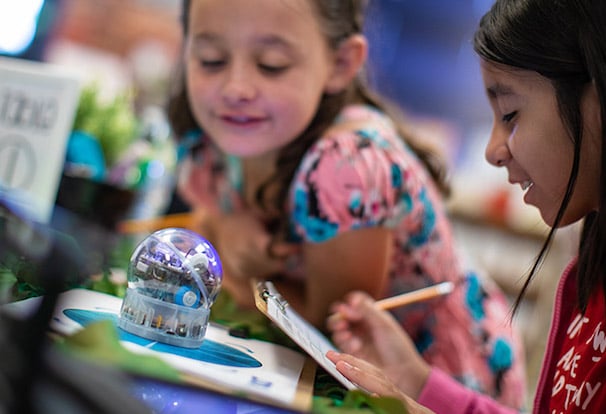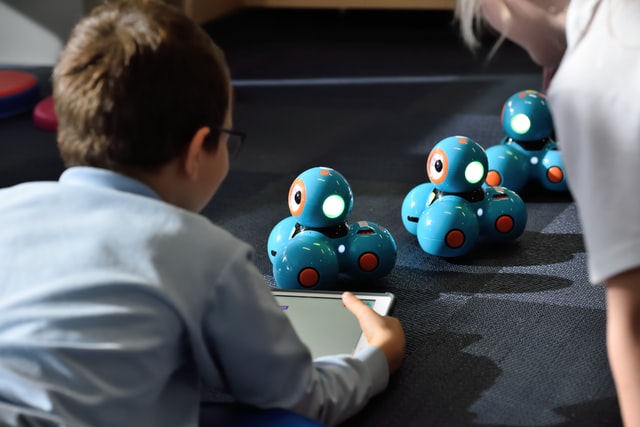By Sebastian Rice
Do you know the most efficient way to teach kids something new?
The answer comes in the form of gamification. It’s a practice of adding game-like elements to learning experiences in order to help students grasp and retain knowledge quickly and effortlessly.
The real question is how to apply this principle to coding and strengthen the inclusion and integration of children. Well, it turns out that robotics has the greatest potential to engage young scholars and assist them in their attempts to figure out how programming really works.
In this post, we are going to explain to you the best robotics-related tips and tricks that can help students become beginner-level programmers. Let’s take a look!
The Basics of Robotics
Before we show you the most important learning tactics, it is necessary to explain the concept of robotics and its practical benefits.
By definition, robotics is an interdisciplinary branch of computer science that involves the design, construction, operation, and use of robots. The field is not applicable to traditional jobs like custom papers and college paper writing services, but it plays a major role in STEM businesses.
What are the benefits of using robotics in learning? It’s hard to mention each benefit here, but we can point out the most significant advantages:
-
Creative thinking: Students who enter the world of robotics need to be creative in order to come up with innovative ideas and solutions to their projects.
-
Problem-solving skills: This benefit is closely related to the first one. Robotics is essentially about problems that need to be solved, so it forces young learners to engage and find feasible solutions.
-
Teamwork: Programming through robotics is usually organized in small groups or couples, thus encouraging students to cooperate and appreciate the power of teamwork.
-
It makes coding feel real: Programming often sounds too blurry and complex to average students, but robotics makes it feel real and tangible.
-
Robotics helps students learn to code: Finally, robotics leads to a greater understanding of programming and it drastically improves students’ coding abilities.
The list goes on, but we must now focus on the main aspect of the article and that is how to use robotics to support the inclusion and integration of students.
4 Ways to Utilize Robotics in the Classroom
Creative teachers can take advantage of robotics in many different ways, but some ideas proved to work well for most groups and classroom activities. Here are the four most practical ways to utilize robotics in the classroom:
Start with small and simple tasksRobotics is often used in beginner-level studies because its goal is to make kids interested in coding and programming. This is exactly why we encourage you to start slowly and assign small and simple tasks that require minimal knowledge at first.
For instance, a robot can have only two or three basic functions that require only a few lines of code to make it work. Once the students get used to it, you can move on and design a bit more complex tasks and objectives.
Work in small groups of pairsAlthough your goal is to promote inclusion and integration of students, you should not push kids and force them to work in large groups. On the contrary, it is much better to form small units or even pairs of students who can work together without interruptions.
This approach proves to be great because it leaves every kid with enough tasks of his own, while there are still lots of opportunities for the children to collaborate and help each other solve the robotics problem.
Encourage everyone to take part in robot designWhen facing a challenge, most students will ask for assignment help among their peers to get the job done faster. However, you should not let any pupil take control of the entire group and do everything single-handedly.
Your objective is to keep everyone engaged, so you better make sure to encourage every single student to take part in robot design. Some kids will learn quickly and others may be a bit slower, but the bottom line is that all students need to contribute to the project.
Organize a presentation upon completionNo matter how simple, every task means a lot to your students. You should keep that in mind and inspire them to organize a presentation of their robots once the project is completed.
It gives everyone the chance to show off a little and feel proud of their work. At the same time, it will serve as an additional incentive for your students to cooperate on new projects and learn even more about robotics and coding simultaneously.
The Bottom Line
If your students don’t like programming, perhaps you should take a different path and teach them with the help of robotics. After all, kids are crazy about robots and they might as well have fun while learning how to code.
We used this article to explain the best tips and tricks that could help your students become newbie programmers. Do you think robotics can work for you and your class? Let us know in the comments!
Discover more about robotics with RobotLAB!

AUTHOR BIO
 Sebastian Rice is an essay writer at the content creation agency called Bestessay.com. Apart from making excellent essay writing reviews, Sebastian is blogging about topics like new technologies, lifelong learning, and digital marketing. He is the father of a lovely toddler and a passionate long-distance runner.
Sebastian Rice is an essay writer at the content creation agency called Bestessay.com. Apart from making excellent essay writing reviews, Sebastian is blogging about topics like new technologies, lifelong learning, and digital marketing. He is the father of a lovely toddler and a passionate long-distance runner.

 Photo by
Photo by